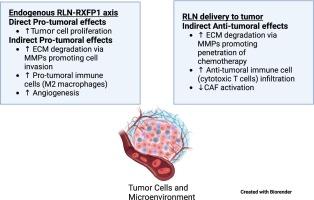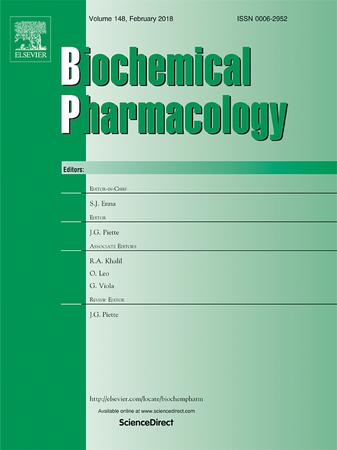松弛素信号在癌症中的作用:综述。
IF 5.3
2区 医学
Q1 PHARMACOLOGY & PHARMACY
引用次数: 0
摘要
对松弛素 (RLN)、其他 RLN 类蛋白和 RLN 家族肽受体 (RXFP) 的研究表明,它们在调节细胞外基质 (ECM)、免疫细胞(尤其是巨噬细胞)和血管生成方面发挥作用,最近的证据还显示它们对肿瘤细胞的信号通路产生影响。我们以这些发现为基础,对这一领域的相关研究进行了整理,并对其临床和研究意义提出了自己的看法。在文章中,我们将讨论相关研究的发现,重点评估 RLN1、RLN2 或 RXFP1 在各种癌症中的表达或作用。我们还简要讨论了其他 RLN 家族多肽及其受体在癌症中的潜在作用。具体来说,我们将从以下几个方面深入探讨 RLN 信号转导的相关问题:与奇偶性/妊娠相关的乳腺肿瘤保护、肿瘤中的表达、癌症情况下血清中的检测、对肿瘤邻近细胞的影响、根据内源性表达或传递对肿瘤发生的影响,以及最后但并非最不重要的一点,对抗癌疗法有效性的影响。我们希望通过总结现有文献来回答这些问题,能让读者了解 RLN 与受体相互作用在癌症中的作用,并找出不确定的领域和未来研究的方向。本文章由计算机程序翻译,如有差异,请以英文原文为准。

Role of Relaxin Signaling in Cancer: A Review
The investigation into relaxin (RLN), additional RLN-like proteins, and RLN family peptide receptors (RXFP) has demonstrated their role in modulating the extracellular matrix (ECM), immune cells, specifically macrophages, and angiogenesis, with recent evidence showing an effect on signaling pathways in tumor cells. These findings serve as the basis for our narrative review to collate pertinent studies in this field and provide our perspective on their clinical and investigational significance. In the article, we discuss findings from pertinent studies focusing on evaluating the expression or effect of RLN1, RLN2, or RXFP1 in various cancers. We also briefly discuss the potential role that other RLN family peptides and their receptors play in cancer. Specifically, we delve into questions regarding RLN signaling in terms of parity/pregnancy-associated protection from mammary tumors, expression in tumors, detection in serum in the setting of cancers, effect on tumor-adjacent cells, effect on tumorigenesis depending on endogenous expression or delivery, and last, but not the least, impact on the effectiveness of anti-cancer therapies. We expect that summarizing the available literature to answer these questions will allow readers to understand the role of RLN-receptor interaction in cancer as well as identify areas of uncertainty and avenues for future investigation.
求助全文
通过发布文献求助,成功后即可免费获取论文全文。
去求助
来源期刊

Biochemical pharmacology
医学-药学
CiteScore
10.30
自引率
1.70%
发文量
420
审稿时长
17 days
期刊介绍:
Biochemical Pharmacology publishes original research findings, Commentaries and review articles related to the elucidation of cellular and tissue function(s) at the biochemical and molecular levels, the modification of cellular phenotype(s) by genetic, transcriptional/translational or drug/compound-induced modifications, as well as the pharmacodynamics and pharmacokinetics of xenobiotics and drugs, the latter including both small molecules and biologics.
The journal''s target audience includes scientists engaged in the identification and study of the mechanisms of action of xenobiotics, biologics and drugs and in the drug discovery and development process.
All areas of cellular biology and cellular, tissue/organ and whole animal pharmacology fall within the scope of the journal. Drug classes covered include anti-infectives, anti-inflammatory agents, chemotherapeutics, cardiovascular, endocrinological, immunological, metabolic, neurological and psychiatric drugs, as well as research on drug metabolism and kinetics. While medicinal chemistry is a topic of complimentary interest, manuscripts in this area must contain sufficient biological data to characterize pharmacologically the compounds reported. Submissions describing work focused predominately on chemical synthesis and molecular modeling will not be considered for review.
While particular emphasis is placed on reporting the results of molecular and biochemical studies, research involving the use of tissue and animal models of human pathophysiology and toxicology is of interest to the extent that it helps define drug mechanisms of action, safety and efficacy.
 求助内容:
求助内容: 应助结果提醒方式:
应助结果提醒方式:


